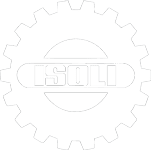As one of the most common workplace ailments, musculoskeletal disorders (MSDs) affect millions of employees across Europe and cost businesses like yours a significant financial burden. By addressing MSDs, you don’t only enhance your employees’ lives but also fuel your business efficiency.
MSDs mainly impact the back, neck, shoulders, and limbs, referring to any impairment of joints or other tissues in the body. These disorders can vary from mild discomfort to serious medical conditions that require treatment. In chronic cases, they can even lead to disability, compelling your workforce to leave their jobs prematurely.
Identifying the Causes of MSDs
Typically, MSDs develop over time without a single, clear-cut cause. Instead, a mixture of physical, biomechanical, organisational, psychosocial, and personal factors usually contribute.
Physical and Biomechanical Factors
You’ll find these factors at play when your employees handle heavy loads, especially when bending and twisting, make repetitive or forceful movements, and maintain awkward and static postures. Conditions such as vibration, poor lighting, or cold temperatures, along with the demands of fast-paced work or prolonged periods in the same position, can also bring on MSDs.
Organisational and Psychosocial Factors
These factors emerge when you set high work demands with low autonomy, provide insufficient breaks, or fail to offer opportunities to change postures. Working long hours or on shift work, or tolerating bullying, harassment, and discrimination in the workplace also contribute. Stress, fatigue, and anxiety resulting from these situations can escalate the risk of MSDs.
Individual Factors
Individual factors refer to elements like an employee’s past medical history, physical capacity, and lifestyle habits such as smoking or lack of exercise.
Developing Solutions for MSDs
When it comes to tackling MSDs, you need to devise multifaceted strategies. Although professional advice may occasionally be required for unusual or serious cases, many solutions are straightforward and cost-effective, like providing a trolley to assist with handling goods or rearranging items on a desk.
Risk Assessment
As an employer, you need to adopt a comprehensive risk assessment approach to address all potential causes of MSDs. It’s crucial to pay special attention to employees more susceptible to MSDs. Your primary aim should be risk elimination, and then you should adapt the work to fit the needs of the workers.
Employee Participation
Involving your workers and their representatives in dialogues about potential issues and solutions is a vital step in managing MSDs effectively. Through these discussions, you can enhance workplace ergonomics, promote better health, and reduce the incidence of MSDs in the long run.

